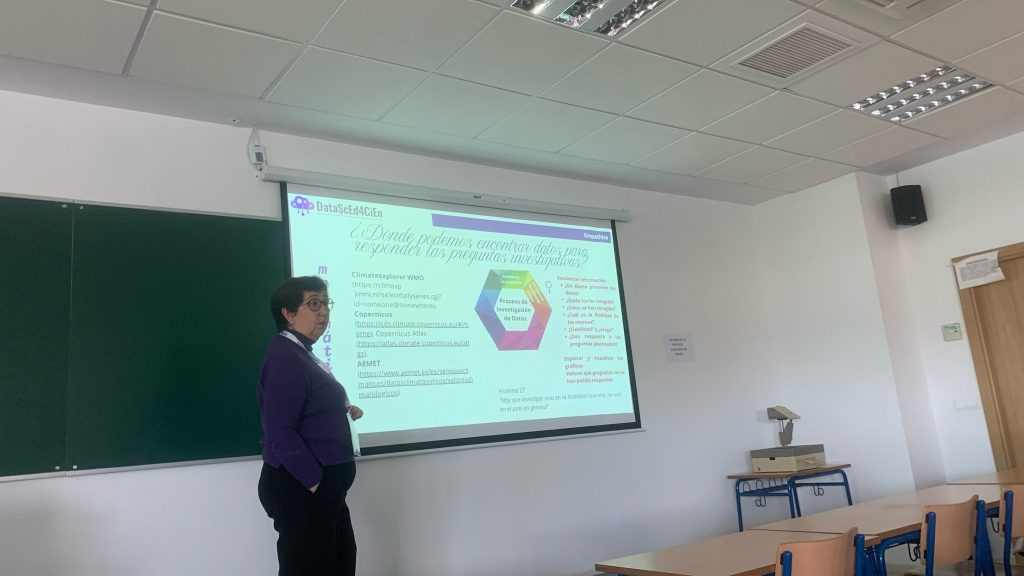The presentation titled “Data Science: Generative and Predictive Models with CODAP” was delivered at the 19th Congress on the Teaching and Learning of Mathematics, held under the theme “Mathematics and Multiculturalism: A Dynamic Approach.”
The work was presented by María Lucía Vargas and Ana Serradó Bayés from Colegio La Salle–Buen Consejo in Puerto Real, Cádiz, Spain. The study was developed within the framework of the Erasmus+ project “Data Science Education in STEAM for Civic Engagement and Social Justice from the Early Years (DataScEd4CiEn)”, which runs from December 2023 to June 2026.
This workshop focused on the use of CODAP (Common Online Data Analysis Platform), a free educational web-based tool designed for data analysis and exploration. CODAP serves both as a platform for developers and as a powerful application for students in primary, secondary, and higher education. The session began with a theoretical introduction on the importance of technological tools that enable authentic practices in data science. It then continued with hands-on activities designed to help participants interact with real datasets and understand the processes of visualization, exploration, comparison, and model creation within a data science framework.
The workshop explored how data science connects mathematics, statistics, and technology to address real-world questions. Participants reflected on how mathematics functions as a language to interpret facts, make inferences, and build predictions that support evidence-based decision-making in contemporary society. The role of statistics was highlighted as an essential mathematical discipline for an increasingly data-driven world, emphasizing its integration with other STEAM fields and its relevance in fostering analytical and critical thinking skills in students.
Through CODAP, participants worked on exploring and manipulating data using the six fundamental “data moves” that structure the analysis process: filtering, grouping, summarizing, calculating, merging, and reorganizing datasets. These actions enable learners to navigate complex datasets—or “big data”—and to construct meaningful statistical and predictive models.
The central activity of the workshop invited participants to investigate a real question: What is the probability of a destructive earthquake occurring in the city of Huelva during the CEAM-19 Congress? Using data from the Spanish National Geographic Institute’s earthquake catalogue, participants imported, filtered, and visualized data from the Iberian Peninsula, performed statistical analyses, explored correlations between depth and magnitude, and created predictive models to assess probabilities.
This experience demonstrated how CODAP can serve as a dynamic learning environment that supports the development of statistical reasoning, data literacy, and computational thinking. It also illustrated how data science education can engage learners in exploring authentic problems and using data-driven insights to better understand their world.

